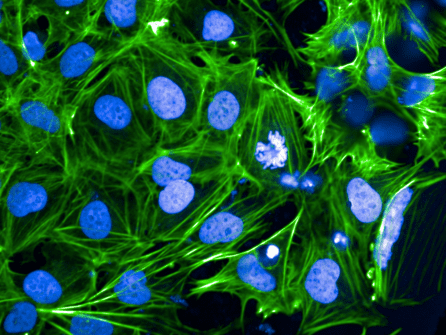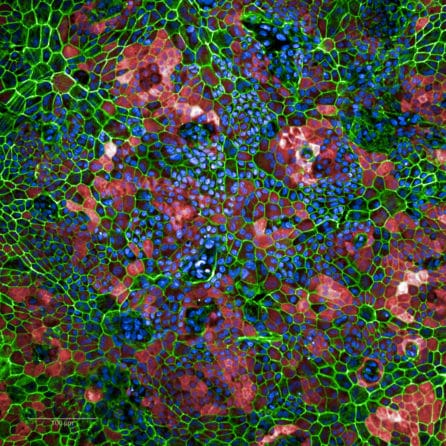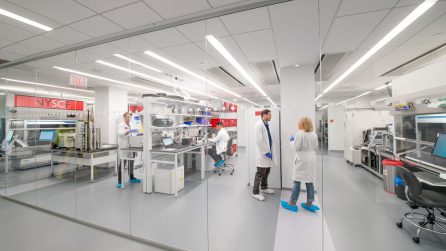Stem Cell Treatments: What You Need to Know
Please note: NYSCF does NOT offer stem cell therapies.
The world of stem cells is an exciting one that is catalyzing better treatments for countless diseases.
Currently, the only proven stem cell based therapies are for blood and immune system disorders, including blood cancers like leukemia. In addition, there are now many promising investigational stem cell therapies being tested in clinical trials, including for heart disease, macular degeneration, and Parkinson’s disease.
Yet it is important for patients to be aware of the many ‘bad actor’ clinics around the world that are taking advantage of vulnerable patients to sell expensive, unproven, and possibly dangerous interventions being marketed as treatments for conditions such as ALS, cancer, arthritis, MS, hair loss, back pain, and more.
How can you know if a stem cell-based procedure is safe, and what questions should you ask before embarking on one? Read on to find out.
What is the difference between a proven therapy, an investigational therapy, and an unproven procedure?
An approved therapy is a therapy that has been approved by the FDA or an equivalent regulatory body and has been evaluated using official clinical trials.
An investigational therapy is a procedure that is being evaluated as part of an official, FDA-regulated clinical trial.
An unproven procedure is an intervention that has not been approved by the FDA or an equivalent regulatory body and has not been evaluated using official clinical trials.
Where do cells come from for stem cell therapies?
There are two major sources of cells for stem cell therapies: allogeneic and autologous. In allogeneic therapies, healthy stem cells are collected or derived from an unrelated donor, converted into a specific cell type, and transplanted into a patient.

In an autologous stem cell therapy, stem cells are collected or derived from a patient themself, and then used to create a certain cell type that is damaged or lacking in that patient, so that a transplant of these cells into the target organ will restore function.
How does a proven stem cell therapy work?
Stem cell-based therapies are a unique option for treating disease or injury. Many diseases result from a dysfunction or loss of cells in a certain part of the body. Stem cells have the potential to replace damaged or diseased cells, restoring normal function in a way that is compatible with the rest of the body. This is because in autologous therapies, they are derived from the patients themselves (versus transplanted cells or tissue from other donors, which require immunosuppressive therapies). This is a kind of “regenerative medicine,” although this term can refer to many types of therapies, including gene therapies and small molecules.
What is stem cell tourism?
‘Stem cell tourism’ refers to the practice of traveling to receive an unproven stem cell treatment abroad. Originally, such procedures were primarily offered in other countries, but now the need to go abroad has diminished due to the boom of predatory clinics popping up around the United States.
What is a predatory stem cell clinic?
A predatory stem cell clinic is a clinic that markets and delivers unproven stem cell procedures directly to consumers. These unproven procedures are often marketed to vulnerable patients at a high price.
What are the consequences of receiving an unproven stem cell procedure?
Unproven stem cell procedures can lead to many harmful complications that can worsen your condition or introduce new ones. There are risks involved any time cells are removed from a person’s body, changed in some way, and reintroduced, including contamination of the cells or interference with the mechanisms that keep them controlled and healthy. Clinics who do not have adequate testing and approval to carry out such procedures run higher risks of complications, some of which can be disastrous.
For example, a stroke patient who received an unproven procedure ended up with a tumor, and several patients who underwent an unproven procedure for age-related macular degeneration lost their vision entirely.
How much does a stem cell treatment cost?
If you are receiving a procedure involving stem cells as part of a clinical trial, it should typically not cost you any money. A steep price tag is an important red flag that could signify that a procedure is unsafe or a scam. Proven therapies that have been evaluated and approved by the FDA can have varying costs.
ClinicalTrials.gov is a resource listing various studies worldwide. However, many of these studies have not been evaluated by the FDA or other agencies of the federal government (see disclaimer here). Make sure to speak with your physician before enrolling in any clinical trials.
What are some red flags you should look for in a potentially unproven stem cell therapy?
As discussed above, beware of stem cell procedures that are not part of a registered and FDA-reviewed clinical trial, or a clinical trial that charges you to enroll.
Be wary of clinics offering procedures that employ stem cells that come from a different part of your body than that affected by your condition (for example, from fat or adipose tissue). Typically, diseases must be treated using the same cell type that is impacted by the disease (for example, blood cancers like leukemia are often treated with blood stem cells derived from bone marrow).
Similarly, if a clinic offers the same procedure for multiple diseases and conditions or relies on testimonials more than scientific data or publications to back up their procedure, the therapy may be unproven.
For more information, see About Stem Cells: a website by the International Society for Stem Cell Research aimed at helping people understand and evaluate the safety and effectiveness of advertised stem cell treatments.
What kinds of legitimate stem cell therapies are under clinical evaluation?
Not every stem cell procedure is predatory: many promising, investigational cell-based treatments are being evaluated in clinical trials (in addition to the proven therapies such as bone marrow transplant that are available to be prescribed to patients).

For example, NYSCF – Robertson Stem Cell Investigator Alumna Malin Parmar, PhD, of Lund University, has spent a decade developing an investigational cell therapy to replace the dopamine-producing cells lost in Parkinson’s disease, and this revolutionary method for treatment (called ‘STEM-PD’) has received approval for a Phase I/IIa clinical trial in Sweden and has reached its first clinical trial participant. These initial trials will test safety and feasibility of the method.
NYSCF is also currently developing an investigational cell therapy for age-related macular degeneration in which scientists will create healthy retinal pigmented epithelial (RPE) cells (the cells lost in the disease) from a patient’s stem cells, which will be placed onto a specially designed patch and surgically implanted behind the retina.
How does stem cell research lead to better disease treatments?
Using stem cells, researchers are able to generate the actual human cells affected by a disease, creating what we call a “disease in a dish.” This model can be used to study how cells develop, deteriorate, and interact in certain diseases. It can also be used for drug testing, allowing us to see how patients might react to different drugs and identify which might be promising options for clinical trials. Finally, these cells can be developed into therapies themselves that can restore the health of a damaged tissue at the root of disease. This approach is still in its early days, but we are hopeful that proven stem cell–based therapies will soon be widely available for many diseases.

NYSCF uses stem cells to accelerate better treatments for a wide range of diseases. Read more about our mission and approach.
Have other questions?
About Stem Cells is a website by the International Society for Stem Cell Research aimed at helping people understand and evaluate the safety and effectiveness of advertised stem cell treatments. You can also view ISSCR’s Guide to Stem Cell Treatments here. We encourage you to visit this site to learn more, or check out the FDA’s guidelines on this topic.
In April of 2022, we gathered experts in research, treatment, and bioethics to discuss the state of stem cell therapies worldwide and how to protect yourself from falling prey to an unproven treatment. Watch the full discussion or read highlights here.
See additional resources below:
- Advancing the Development of Safe and Effective Regenerative Medicine Products, Peter Marks, MD, PhD; fda.gov
- Unproven stem-cell treatments can be dangerous. The hype needs to stop, Timothy Caulfield; theglobeandmail.com
- Patients Lose Sight After Stem Cells Are Injected Into Their Eyes, Denise Grady, nytimes.com
- FDA Warns About Stem Cell Therapies, fda.gov
- Nine Things to Know About Stem Cell Treatments; aboutstemcells.org
- We need better regulation of stem cell therapies, especially rogue clinics; David a. Pearce, statnews.com
- Unregulated Stem Cell Clinics Endanger Patients and Limit Research; William A Haseltine, forbes.com

